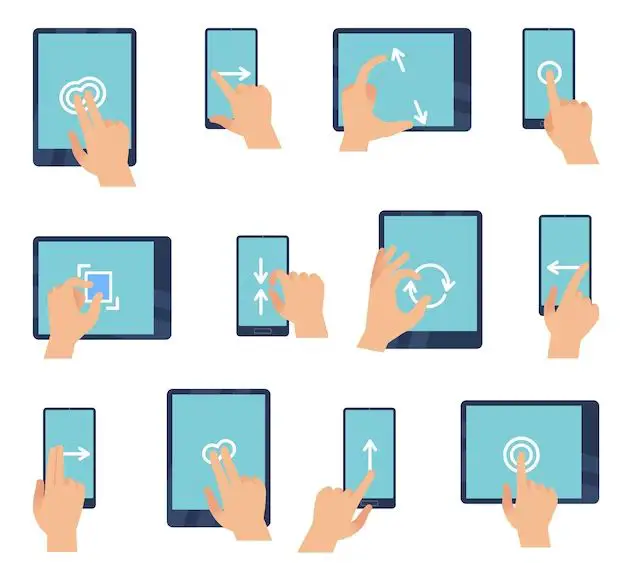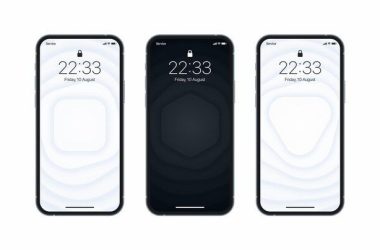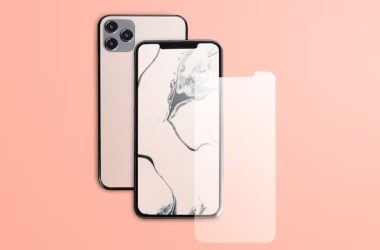What is Touch Sensitivity?
Touch sensitivity refers to how responsive a touchscreen display is when a user touches it. It measures how much electrical change is caused when a finger touches the screen (Computer Language). Touchscreens work based on the principle of capacitance. Capacitive touchscreens have a layer that stores electrical charges and sensors that detect changes in capacitance when the user’s finger touches the screen. This change in capacitance is registered as a touch event (TechTarget).
There are two main types of touchscreens – resistive and capacitive. Resistive touchscreens have a flexible top layer that touches a conductive bottom layer when pressed, completing a circuit and registering the touch. Resistive screens require more pressure and are less sensitive than capacitive screens. Capacitive touchscreens only need a light touch to register the change in capacitance of the screen surface (TechTarget). Capacitive screens offer more sensitivity and responsiveness than resistive screens.
Why Touch Sensitivity Matters
More sensitive screens provide a better user experience. A screen that can detect subtler touches allows for more precise input and control (Magnetic Case for iPhone 15 Pro Max with Camera Cover). Users can type more accurately on a highly sensitive keyboard, draw or write more smoothly with a sensitive stylus pen, and make selections with finer detail.
Increased touch sensitivity also enables advanced features like pressure sensitivity. Just like pressing harder with a pencil on paper creates darker lines, pressure-sensitive screens can detect how hard you are pressing. This allows for intuitive pressure-based control in drawing apps, 3D touch shortcuts, and new gameplay possibilities (Magnetic Titanium For iPhone 15 ProMax Case).
Measuring Touch Sensitivity
Touch sensitivity is measured in terms of the activation force needed to register a touch on the screen. Activation force refers to the minimum amount of force needed for the screen to detect and respond to a touch. Lower activation forces correspond to higher sensitivity, as less force is required for the screen to activate.
Activation force is typically measured in grams (g) or ounces (oz). According to NIST, the activation force for touch screens ranges from around 20g to 150g. More sensitive consumer touch screens tend to have activation forces on the lower end of this range, around 30-60g. Devices designed for drawing and stylus input may have activation forces as low as 7-15g for precise control.
To test activation force, devices apply controlled amounts of force to different areas of the screen using automated robotic arms or other instruments. The lowest force that consistently activates the screen at each test point represents the activation force. Lower and more consistent activation forces across the screen indicate better touch sensitivity.
Factors Affecting Sensitivity
Several factors influence the touch sensitivity of a screen:
The underlying screen technology plays a big role. Capacitive touchscreens tend to offer better sensitivity than older resistive touchscreens. Capacitive screens use electrical current in the human body to detect touch and tend to be more responsive.
Any material overlaying the screen affects sensitivity. Screen protectors and phone cases can interfere with and dampen touch sensitivity. Using thinner overlays and screen protectors optimized for capacitive screens can help minimize this effect.
The touch controller hardware and firmware have an impact as well. More advanced touch controllers with improved software algorithms can track inputs more precisely. Controller sensitivity settings can sometimes be adjusted through device configuration.
Finally, the software and drivers on the device influence sensitivity. Operating system and app-level settings may allow modifying touch sensitivity, like enabling a “high sensitivity” or “screen protector” mode. Software updates can also enhance device touch performance over time.
Improving Sensitivity
There are several ways to improve the touch sensitivity of screens. Some key methods include:
Hardware upgrades like switching to projected capacitive technology allow for multi-touch and more sensitive screens. Projected capacitive screens use a grid of electrodes to precisely detect finger location and pressure on the screen.
New screen materials like graphene allow for extremely thin yet highly conductive screens. Graphene is strong, transparent, and conducts electricity better than copper. This enables very sensitive touch response.
Software calibration and algorithms also help boost touchscreen sensitivity. The sensitivity can be improved via settings on the device to better detect light and precise touches. Features like palm rejection also improve accidental touch rejection.
Overall, hardware upgrades, new materials, and software improvements all contribute to enhancing touch sensitivity for modern devices to enable the best user experience.
High Sensitivity Use Cases
Some of the key use cases that benefit from high sensitivity touch screens include:
Drawing and Art Apps
Touch screens with high sensitivity allow for more precise and accurate input when using drawing or art applications (MPofCinci, 2023). The capacitive technology can detect the lightest brushes of a stylus or finger, enabling artists to illustrate fine details and subtle shading effects.
Musical Instruments
Highly sensitive touch screens make excellent surfaces for virtual musical instruments. The nuanced touch capabilities let musicians vary sounds through delicate, expressive gestures. This expands the range of techniques possible compared to less sensitive surfaces (MPofCinci, 2023).
Gaming Controls
For gaming devices and controllers, increased touch sensitivity gives players more responsive, accurate input. Fast reaction times and ability to make precise movements can provide a competitive edge, especially for real-time strategy and first-person shooter games.
Accessibility Features
For users with disabilities, high touch sensitivity enables accessibility features like light, gentle taps or swipes to navigate apps and interfaces. This enhanced precision helps meet the needs of those with limited mobility and dexterity.
Challenges with High Sensitivity
One of the key challenges with highly sensitive touchscreens is accidental or false touches. As touch sensitivity increases, the screen is able to detect even very light touches that may not be intentional input from the user. This can lead to inadvertent actions like opening apps, selecting text, or moving the cursor when not desired (1).
Highly sensitive screens are also more prone to issues with fingerprints and clarity. With higher sensitivity, even very light touches from fingertips can leave oils and smudges on the screen that can obscure content. This is especially true for devices like tablets and e-readers that are held for long periods of time (2). Frequent wiping and cleaning may be required.
There are also potential durability and robustness tradeoffs with highly sensitive touch panels. More sensitivity requires thinner layers and materials that can flex to detect lighter presses. But this comes at the cost of reduced scratch resistance, impact absorption, and overall durability compared to standard touchscreens (1). Highly sensitive screens may be more prone to damage from drops or pressure.
Latest Advancements
There are some exciting innovations in touchscreen technology that have the potential to highly increase the sensitivity and capabilities of touchscreens in the near future.
Force Sensing Touchscreens
Force sensing touchscreens can detect not just the location of a touch, but also the amount of pressure applied. This allows for new gestures and input methods, like pressing harder for actions like zooming in or activating different functions depending on touch pressure.
Quantum Tunneling Tech
Quantum tunneling touchscreens use quantum physics to detect touches. Tiny electrodes emit electrons that can detect even the slightest touch when the flow of electrons is disrupted. This allows for touch sensitivity on an atomic scale.
AI-Powered Software
Advancements in artificial intelligence and machine learning are being applied to improve touch accuracy and sensitivity in software. The AI can learn to interpret any touch irregularities and improve precision over time.
The Future of Touch
The future of touch screen technology is full of potential and innovation for enhancing the user experience through more advanced touch interactions. Some key areas of future development include:
Haptics and Tactile Feedback
Haptic technology that provides tactile feedback is advancing to give users a more realistic and immersive touch experience. Touchscreens may incorporate localized haptic responses or electrostatic friction to simulate textures, buttons, edges, and other tactile sensations (Exploring Touch Screen Technology: A Comprehensive Guide).
Flexible and Stretchable Screens
Flexible and stretchable touch displays are emerging, enabled by thin, bendable substrates and stretchable conductive materials. These screens can wrap around devices or expand and deform with user input. Potential applications include foldable mobile devices, wearable gadgets, curved automotive displays, and interactive walls and furniture (Touch Screen Technology: Elevating Display Assemblies).
Touchless and Hover Sensing
Touchless gesture and proximity detection allows users to interact with screens hover without touching them. This provides benefits such as preventing screen smudges and enabling touch interactions in hygiene-sensitive environments. Touchless technologies like ultrasonic and radar sensing are gaining traction (What is the Future of Touch Screen Technology?).
Conclusion
In summary, touch sensitivity refers to how accurately and precisely a touchscreen detects and responds to touch input. High touch sensitivity allows devices to recognize even the lightest brushes and taps. It provides a more natural and responsive user experience.
Improving touch sensitivity continues to be an important area of innovation. More sensitive screens allow for new types of interactions and use cases, from pressure-sensitive drawing apps to responsive gaming controls. Advances in touch sensing technology, materials, and chipsets will likely enable even higher sensitivities in the future.
As devices incorporate touch capabilities into more surfaces and contexts, sensitivity will need to keep pace. The most exciting touchscreen devices on the horizon are those that combine high sensitivity with intuitive interfaces. This will enable more seamless interactions for end users, opening up new creative and productive possibilities.




